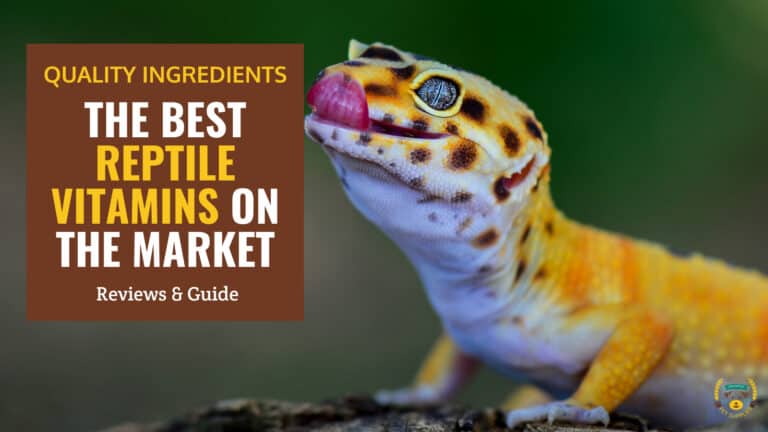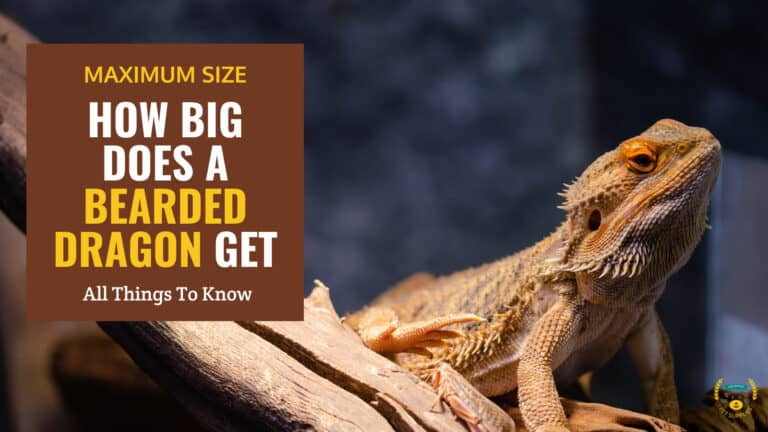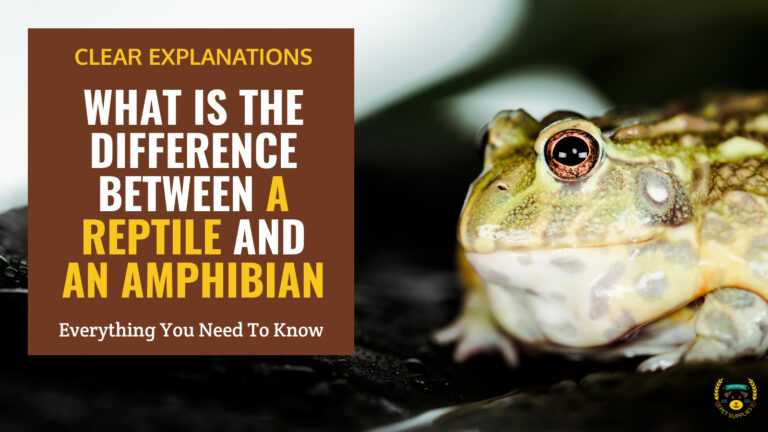9 Child-Friendly Reptile Pets That Are Safe for Your Kids
Last updated: February 3, 2024

Summary
- Certain reptiles are excellent, educational pets for kids due to their calm nature and ease of care.
- Recommended child-friendly reptiles are Leopard Geckos, Corn Snakes, Russian Tortoises, Bearded Dragons, and Ball Pythons.
- Important considerations include regular vet checks, consistent hygiene, suitable habitats, and a reptile's temperament.
- It's essential to choose pets that are manageable for a child's age and avoid aggressive or complex-needs species.
- The right reptile can be a long-term, rewarding companion for a child.
Reptiles can make wonderful pets for children when chosen carefully. They teach responsibility through their specialized care needs and ignite curiosity about the natural world.
This article will guide you through selecting from the most child-friendly reptile species that bring joy and enrichment without endangering little hands, from small geckos to trainable turtles, which better suit young caretakers. However, venom, size, cage requirements, and expense erase others from the shortlist.
Before jumping into reptile adoption, learn which ones tend to tolerate daily handling and affection. Discover the top child-friendly reptilian pets that inspire wonder, responsibility, and safety.
Our Top Child-Friendly Reptiles
The following are our recommendations for the top child-friendly reptiles that you can get without any concerns about something going wrong. These are characterized by their calm temperament and ease of handling and care.
Leopard Geckos

These lizards, known for their yellow complexion decorated with brown bands that turn into spots over time, usually reach a length of roughly 12 inches and, with appropriate care, can live 8 to 10 years.
Their habitat includes clear tanks with stones for climbing and a shallow water dish for bathing. A moist hiding place with misted moss or vermiculite is essential to ensure they can shed their skin properly.
For a comfortable environment, a heat lamp above the tank should create a warm area of about 90 degrees Fahrenheit, with a cooler section in the low 70s. Despite being nocturnal by nature, they need a full-spectrum UV-A/UV-B light to help with vitamin D3 synthesis and calcium uptake when kept inside.
Their diet consists mainly of live crickets, which should be offered daily or every other day, supplemented occasionally by other insects like mealworms and wax worms that have been pre-fed with vitamins. These insects should also be coated with calcium powder before being fed to the gecko.
Larger specimens can eat small defrosted pinkie mice. Because of their gentle disposition and ease of handling, these lizards make excellent pets for first-time reptile owners.
We invite you to check our dedicated guide to the popular leopard gecko morphs to choose from.
Corn Snakes

Corn snakes, also called red rat snakes, are widely recognized as child-friendly reptile pets, thanks to their docile nature and manageable size.
Growing to a length of between four and six feet, corn snakes are large enough to handle without being too delicate, yet they do not become as intimidatingly large as many boas and pythons. This balance makes them an ideal choice for families looking for a pet that is both sturdy and not daunting for children to interact with.
In terms of care, corn snakes have straightforward needs that can also serve as an educational experience for children, making them one of the top snake species for first-time owners. Their housing consists of a simple glass aquarium with a secure lid, teaching responsibility to prevent the pet from escaping. Accessories such as a hide box and climbing branches replicate a natural environment and can spark a child's interest in the snake's behavior and habitat. Additionally, by providing a heat source and maintaining a temperature gradient from 85 degrees in the warm zone to the low 70s in the cool zone, children can learn about the importance of thermoregulation in reptiles.
Humidity is important for corn snakes, especially when shedding, and using damp sphagnum moss or paper towels encourages children to engage in routine care practices. Feeding, which involves freshly killed or thawed rodents, offers a hands-on approach to understanding the dietary needs of carnivorous pets without the risks associated with live prey. Moreover, the gentle handling of these snakes after they have fed and are not yet hungry reinforces positive interactions, teaching children how to respect and care for animals properly.
Overall, the low-maintenance and friendly disposition of corn snakes, coupled with their vibrant coloration, make them an attractive and suitable introduction for children to the world of reptile keeping.
Russian Tortoises

With adults growing no larger than eight to ten inches, Russian tortoises make excellent child-friendly reptile pets. They can live for over 40 years when provided with proper care. They are adaptable to different living conditions, thriving outdoors in warm climates or in well-ventilated glass tanks or large plastic bins in more temperate zones.
Creating an ideal environment for Russian tortoises involves considerations such as using enclosures with opaque sides to prevent pacing and bumping into tank walls. Providing essential heat, maintained between 95 and 100 degrees Fahrenheit for basking, can be achieved through standard heat bulbs, infrared heat bulbs, or ceramic heat emitters. Full spectrum bulbs offering UVB light are crucial for their health, aiding in synthesizing vitamin D3 and proper calcium metabolism.
These tortoises exhibit natural behaviors like digging and burrowing, requiring deep substrates such as recycled or shredded paper. A hide box, like an upside-down half log or wooden box, offers shelter and security. Despite being desert species, these tortoises benefit from being soaked a couple of times a week in shallow warm water to stay hydrated.
As herbivores, Russian tortoises have a diet that includes dark, leafy greens, vegetables, and occasional fruit treats (not exceeding 10% of their diet). Commercial tortoise diets, along with fresh grass and hay, can also be part of their varied nutrition. Calcium powder, both regular and with vitamin D, should be lightly sprinkled on their food every other day, with multi-vitamin dusting twice a month.
Beyond their unique care requirements, Russian tortoises are gentle and enjoy handling, making them calm and suitable pets for families with children. As long as their feet are kept in contact with a solid surface, these reptiles thrive on human interaction, providing an educational and enjoyable experience for young reptile enthusiasts.
Bearded Dragons

These beautiful little creatures, slightly larger than leopard geckos, require a bit more space and specific lighting conditions. Despite this, they prove to be as gentle and approachable as their smaller counterparts. To learn more about the full-grown size of a bearded dragon, check out this informative article on how big a bearded dragon gets.
A key advantage in favor of bearded dragons is their simple care routine. Incorporating daily servings of fresh veggies, especially dark, leafy greens, into their diet not only adds an interactive element for children but also contributes to the overall health and well-being of the reptile. As pets, bearded dragon's lifespan will be around 8 to 15 years, making them a suitable companion for a child's formative years.
Creating an ideal habitat for bearded dragons involves providing glass tanks with carefully regulated temperature zones—90-105°F for basking and a mid-70s cool zone. Enriching their environment with climbing structures and a full-spectrum light featuring a UV-B/UV-A bulb ensures their physical and psychological well-being. Regular misting sessions play a vital role in maintaining hydration and promoting proper skin shedding, adding an interactive dimension to their care routine.
Feeding bearded dragons is a kid-friendly task, involving a mix of live crickets, mealworms, and frozen and thawed pinkie or fuzzy mice, all supplemented with a calcium boost.
Incorporating bearded dragons into a family setting goes beyond their basic care requirements. These reptiles, if handled consistently, exhibit docility and interactivity, creating a positive and educational experience for children. The combination of manageable size, ease of care, and the potential for bonding makes bearded dragons an ideal choice for families seeking a child-friendly reptile companion.
Ball Pythons

Often called royal pythons, Ball pythons are a nonvenomous constrictor snake species that originate from sub-Saharan Africa. They are noted for their relatively smaller size when compared to other African pythons, and their temperament is particularly suited for a family environment.
The name 'royal python' may derive from the rich array of colors and patterns that these pythons display, fascinating children and offering a visual charm to the pet. Some even relate the naming to the royal family having this species as pets in the 19th century.
These snakes are one of the most child-friendly reptile pets for many reasons. Their smaller size ensures that children can handle them without undue difficulty. Moreover, ball pythons are known for their well-mannered behavior; they tend not to show aggression if handled regularly and correctly. This can further enhance a ball python's comfort around its young handlers. A bonus for cautious parents is that ball pythons are known to rarely bite, which makes them a safer choice for children compared to more aggressive reptile species.
In terms of care requirements, ball pythons are relatively low-maintenance. A suitable habitat for a ball python includes a terrarium that is approximately 40 gallons in size. For detailed guidance on meeting these needs, refer to our beginner's guide to ball python care for comprehensive care instructions specially tailored for first-time owners.
When handled from a young age, these snakes are often described as being 'puppy dog tame'; they can grow to be larger snakes but can also serve as long-term companions, adapting and growing as the child does.
Blue-Tongued Skinks

The blue-tongued skink is often recommended as one of the best lizards for children given its typically docile nature and ease of handling.
Larger than small geckos yet lower maintenance than similar-sized reptiles, the blue-tongued skink may cause minor discomfort if it accidentally bites very young kids, but can be an engaging reptile pet for older children.
With proper care including an adequately sized enclosure, heat and lighting, blue-tongued skinks are appreciated for being hardy, robust and gentle when tamed, and their unique smooth scales and signature bright blue tongue.
Though supervision is still required, their calm disposition makes blue-tongued skinks suitable for children old enough to properly handle them. An enclosure approximately 3 feet long by 1.5 feet wide provides ample terrestrial space for their long bodies and short legs. With routine participation in caretaking, blue-tongued skinks can become treasured lifelong animal companions.
Stinkpot Turtles

Stinkpot turtles, also called musk turtles, make for wonderfully amusing pets for children who are fascinated by reptiles and enjoy aquatic species. Despite their ability to emit a potent musky smell as a defense, stinkpots overflow with personality - ranging from extremely shy and secretive on land to curiously interactive and energetic when swimming in their tank habitat.
A 30-40 gallon aquarium fitted with proper lighting, heating, basking areas, and 8 inches of dechlorinated water allows children to fully enjoy their stinkpot turtle's lively aquatic antics. Transforming into feisty balls of energy when submerged, stinkpots will eagerly swim about, exploring every inch of their environment and readily coming up for food during feeding times.
Easy to care for, stinkpot turtles thrive on commercially available turtle diets paired with occasional treats like small fish, earthworms or crickets. Their compact size makes them simple to handle once comfortable with their caretaker. Whether hiding in their shell on land or zipping through water, stinkpot turtles reveal themselves as quirky, amusing pets perfectly suited for inquisitive young reptile lovers. The responsible caretaking required helps children gain a greater appreciation for these unique reptiles.
Collared Lizards

Collared lizards make excellent reptile pets for school-age children when properly socialized. These docile lizards dazzle with vibrant body colors and an intriguing collar fold of skin around their necks. Native to hot, dry desert habitats of the American Southwest, collared lizards adapt well to captivity but require proper care.
Young collared lizards especially enjoy an insect-rich diet to fuel growth and activity. Crickets, mealworms, waxworms, and other feeder insects should be gut-loaded with nutrients and lightly coated in calcium powder prior to feeding. Despite being diurnal hunters, a heating lamp and full-spectrum overhead lighting help juveniles process nutrients much like their wild counterparts basking in the harsh sun.
An enclosure of at least 30 gallons offers adequate room for exercising and basking under lamps. Inside, a shallow water dish, hide box, and climbing décor like branches or rocks enrich habitat space. Gentle handling when young and proper setup make most collared lizards quite docile and comfortable around children under supervision.
Their colorful hides, inquisitive nature and moderate size make them an ideal child reptile pet.
Kenyan Sand Boas

With their small, sturdy build, docile temperament and unfussy care requirements, Kenyan sand boas make ideal pet snakes even for novice young handlers. Their thickset bodies reach just a few feet long, allowing children to confidently manage these slow-moving snakes. Hardly intimidated by frequent handling, Kenyan sand boas remain peaceful when held.
As desert-dwellers, Kenyan sand boas are adapted to thrive despite irregular access to food and water - perfect for busy households. Their tolerance of gentle handling coupled with hardy constitutions means even a bit of clumsy interaction leaves them unfazed.
Between their calm demeanor, manageable size, and overall robustness, Kenyan sand boas live up to their reputation as premiere "first snake" pets for budding young herpetology enthusiasts. Their distinctive blunt heads and tiny eyes give them plenty of visual appeal as well.
With proper research and preparations, Kenyan sand boas offer children a foolproof introduction to responsible exotic pet caretaking.
Things to Keep In Mind With Your Child-Friendly Reptile Pet
Reptiles inspire wonder in kids, but reducing risks is paramount when handling these exotic pets known to carry salmonella bacteria. Consider the following when selecting a family reptile:

Vet Health Screening
Ensure any prospective reptile is vet-cleared of salmonella before allowing children to interact with it. Arrange initial testing and then periodic sessions every 6 months for existing pets. Kids' underdeveloped immunity system demands extra diligence.
Hand Washing
Mandate thorough hand washing with antibacterial soap and warm water immediately after any reptile contact. Have kids sing "Happy Birthday" twice through to ensure adequate time to get rid of any germs.
Children often neglect proper hand hygiene without oversight.
Age Appropriateness
Avoid introducing reptile pets at all for children under 5 years old given health vulnerability. Kids aged 6-12 can interact gently with calm reptiles under strict supervision.
Clean Habitat
Maintain a pristine, disinfected tank or enclosure through twice weekly full scrub downs to remove all waste. This greatly reduces bacteria levels.
Don't forget to use disposable gloves during cleaning.
Reptile Temperament
Prioritize placid reptiles less prone to nipping like leopard geckos, corn snakes, or various skinks which rarely bite. However, any species may react suddenly if mishandled or startled so educated handling is essential.
Take the time to teach your child(ren) proper handling of the specific reptile species you pick.
Reptiles to Avoid

Avoid species with higher risks of harming children or that children may struggle to properly handle. This includes aggressive varieties like large constricting snakes prone to squeezing as well as larger tortoises and swift agile lizards a child could accidentally drop.
Additionally, venomous reptiles like certain spiders, scorpions and snakes pose obvious dangers from potential bites.

With some common sense selecting calmer reptile species and emphasizing consistent hygiene habits, including hand washing and enclosure disinfection, kids can safely reap the educational benefits of reptile companions for years if risks are minimized.
Final Thoughts
Reptiles ignite curiosity in children, unlike any other pet. Their alien features and behaviors that differ from furry friends fascinate young minds. However, proper care and supervision ensure each unique species thrives under your roof.
Reflect on whether you can provide the reptile's specialized habitat, nutrition, healthcare, and handling needs. With good preparations, bearded dragons, leopard geckos, corn snakes, etc. teach children attentive animal husbandry. When welcomed into a household fully committed to their welfare, reptiles build bonds through gentle, supervised interactions.
For those looking to understand more about their pet’s background, you can learn about how reptiles differ from amphibians to further appreciate the distinctions within the animal kingdom.
Weigh the joys and challenges of adopting a reptile companion for your child. Share below your favorite family-friendly species or tips for first-time reptile owners.
Thanks for reading!






